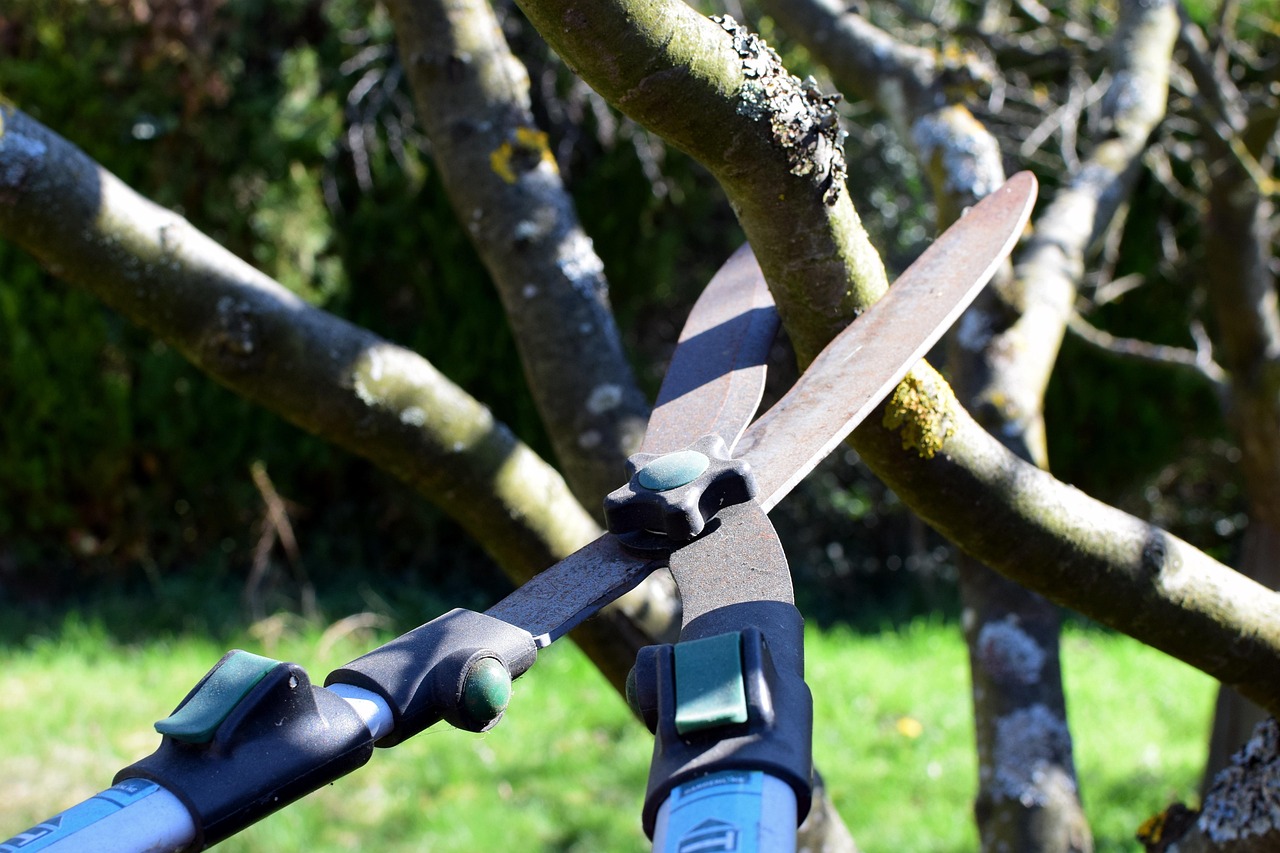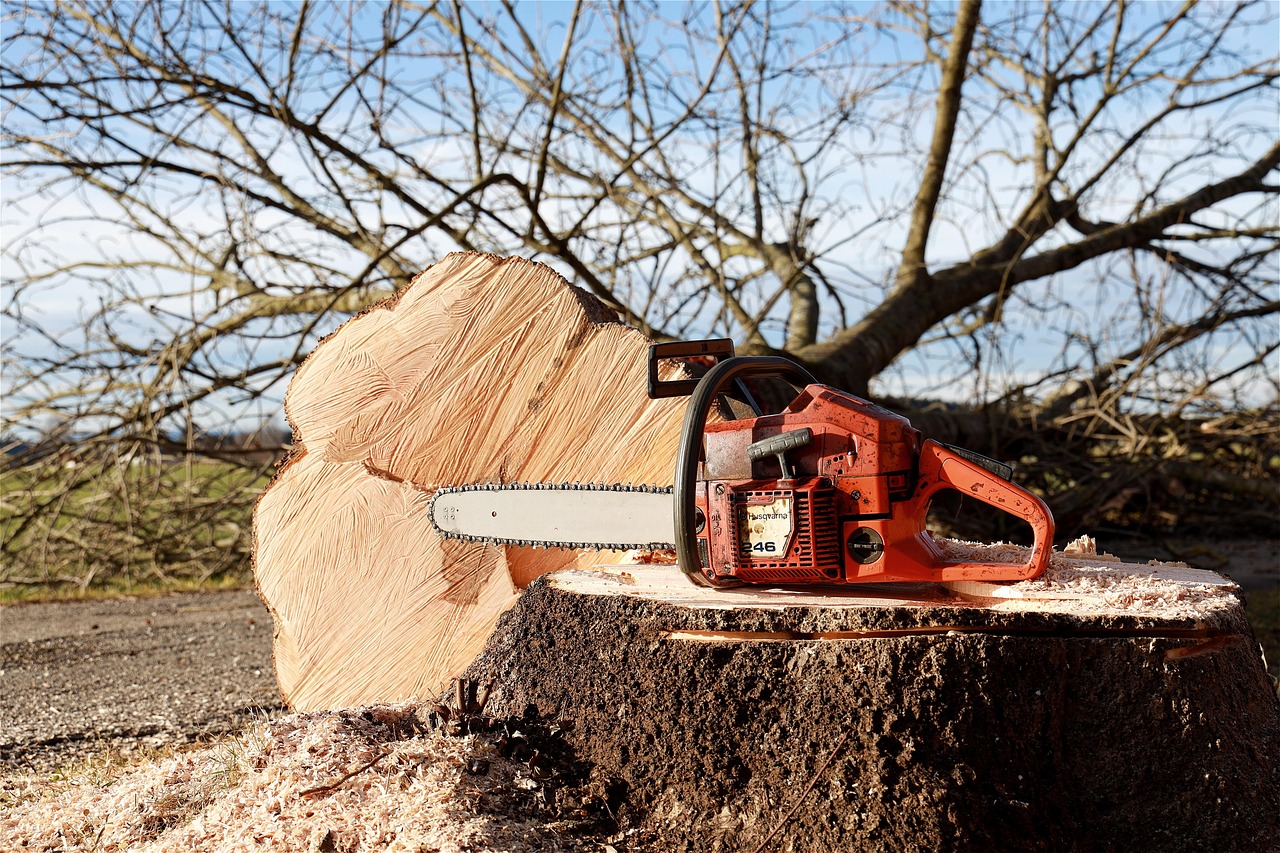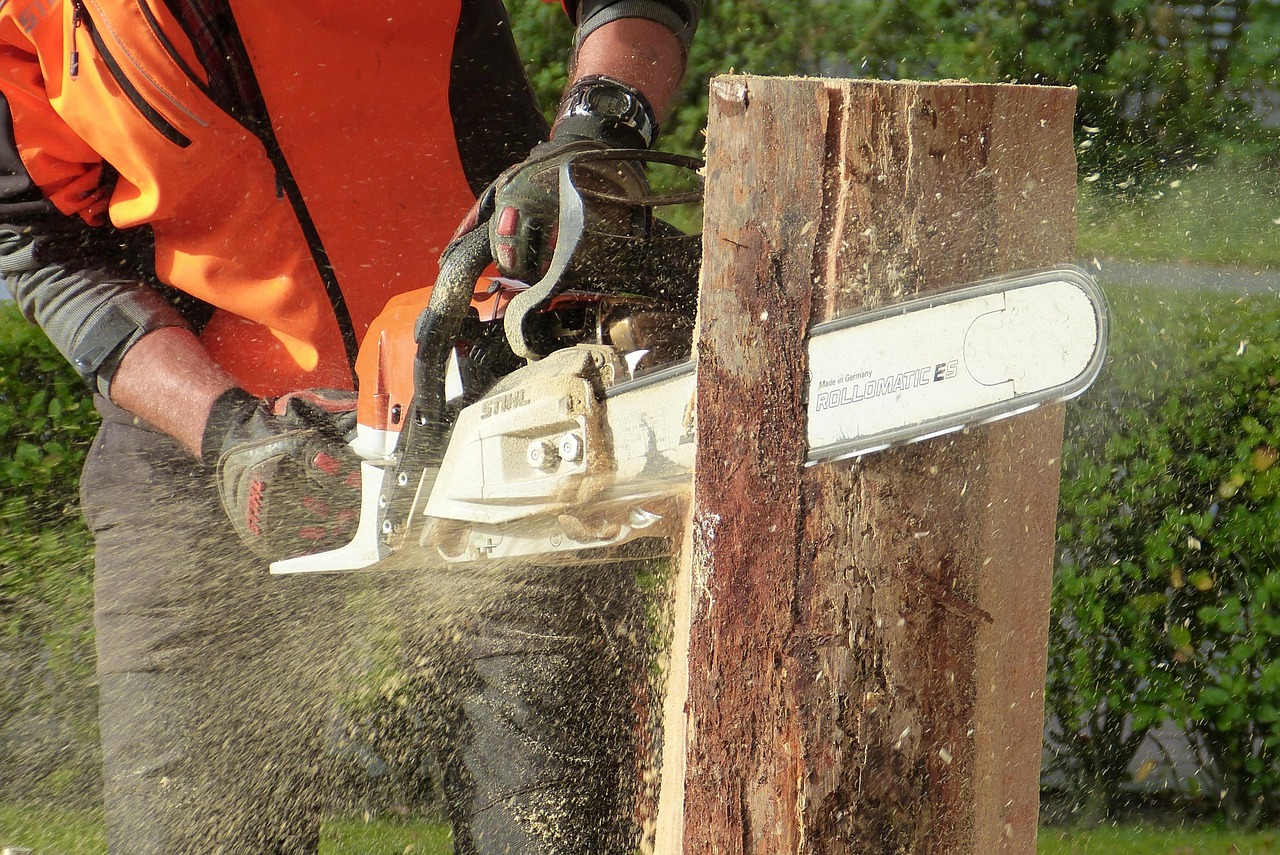Indoor tree pruning is essential for improving air quality. By removing dead or overgrown branches, you enhance plant health, encouraging them to absorb more carbon dioxide and release oxygen. Additionally, well-maintained trees can better filter indoor pollutants, creating a healthier living environment.
Indoor plants are becoming increasingly popular in homes and offices. They not only add beauty but also play a crucial role in enhancing air quality. Trees, in particular, have the ability to purify the air by absorbing harmful toxins and releasing oxygen. However, maintaining their health through proper care, including regular pruning, is vital for maximizing these benefits.

Pruning is the process of trimming branches and foliage. This practice encourages healthy growth and can significantly impact a tree’s ability to improve air quality. When branches are overgrown, the plant may struggle to receive adequate sunlight and air circulation. This can hinder its capacity to photosynthesize effectively.
The Benefits of Indoor Tree Pruning
Pruning indoor trees offers numerous advantages beyond just aesthetics. Below are some key benefits associated with regular pruning:
- Enhanced Growth: Pruning encourages new growth by stimulating the production of hormones that promote leaf and branch development.
- Improved Air Quality: Well-maintained trees can absorb more pollutants and provide cleaner air.
- Increased Light Exposure: Removing excess branches allows for better light penetration, promoting healthier leaves.
- Pest and Disease Control: Pruning helps remove infected or infested branches, reducing the risk of spreading issues throughout the plant.
- Aesthetic Appeal: Regular pruning keeps trees looking their best, enhancing the overall decor of your space.
Understanding how indoor trees contribute to air quality is essential for appreciating the importance of pruning. Various studies have shown that specific indoor plants can significantly improve air quality by filtering out common pollutants such as formaldehyde, benzene, and trichloroethylene.

| Plant Type | Pollutant Removal | Recommended Pruning Frequency |
|---|---|---|
| Spider Plant | Formaldehyde | Every 4-6 weeks |
| Pothos | Benzene | Every 6-8 weeks |
| Peace Lily | Trichloroethylene | Every 4-6 weeks |
| Rubber Plant | Formaldehyde | Every 3-4 months |
The relationship between indoor trees and air quality is not only fascinating but also practical. As people spend more time indoors, especially in urban settings, ensuring clean air becomes increasingly important. Indoor trees can help mitigate the effects of indoor pollution, thus promoting better health and well-being.
For individuals or families with allergies or respiratory issues, maintaining healthy indoor plants through regular pruning can be particularly beneficial. Pruned trees are less likely to harbor mold or pests that can trigger allergic reactions. Additionally, they can create a calming atmosphere, which can reduce stress levels.
How to Prune Indoor Trees Effectively
Effective pruning requires knowledge and skill. Here are some essential steps to follow when pruning indoor trees:

- Assess the Plant: Before pruning, examine the tree carefully. Look for dead or damaged branches that need removal.
- Select the Right Tools: Use clean, sharp pruning shears or scissors to make clean cuts.
- Remove Dead Wood: Start by cutting away any dead or diseased branches to help prevent further issues.
- Shape the Tree: Trim overgrown branches to maintain a balanced shape. This promotes even growth.
- Avoid Over-Pruning: Only prune about 15-20% of the tree at a time to avoid stress.
After pruning, it is essential to care for the tree appropriately. Ensure it receives adequate water, light, and nutrients to support its recovery and growth. With proper care, your indoor trees will thrive and continue to improve your home’s air quality.
Understanding the significance of indoor tree pruning is crucial for anyone looking to enhance their living space. By prioritizing plant health through regular maintenance, individuals can enjoy the aesthetic appeal of their trees while also benefiting from cleaner air indoors.
Understanding Indoor Air Quality
Indoor air quality refers to the air quality within and around buildings. It is a crucial factor that affects the health and comfort of occupants. Poor indoor air quality can lead to various health issues, including respiratory problems, allergies, and headaches. Therefore, maintaining clean air inside your home is essential.

Several factors can influence indoor air quality, such as:
- Poor Ventilation: Stagnant air can accumulate pollutants, making it harder to breathe.
- Household Chemicals: Cleaning agents, paints, and pesticides can release harmful volatile organic compounds (VOCs).
- Humidity Levels: Excess moisture can promote mold growth, while low humidity can cause dry skin and respiratory irritation.
- Dust and Allergens: Dust mites, pet dander, and pollen can exacerbate allergies and asthma.
The Role of Indoor Trees in Air Quality
Indoor trees and plants play a significant role in improving air quality. They can help filter out toxins and provide oxygen, creating a healthier environment. Here are some ways plants contribute to better air quality:
- Carbon Dioxide Absorption: Trees absorb carbon dioxide during photosynthesis, reducing the overall concentration of this gas in the air.
- Oxygen Production: As trees take in carbon dioxide, they release oxygen, which is vital for human health.
- Pollutant Filtration: Many indoor plants can filter harmful substances like formaldehyde and benzene from the air.
- Humidity Regulation: Plants release moisture through transpiration, which can help maintain humidity levels indoors.
Choosing the Right Indoor Trees for Air Quality
Selecting the right trees for your indoor space is crucial for maximizing air quality benefits. Some plants are more effective than others at improving indoor air quality. Consider the following popular options:
| Plant Name | Air Quality Benefits | Care Requirements |
|---|---|---|
| Ficus Benjamina (Weeping Fig) | Removes formaldehyde and other toxins | Moderate light and regular watering |
| Spathiphyllum (Peace Lily) | Reduces ammonia and benzene | Low light and consistent moisture |
| Dracaena Marginata (Dragon Tree) | Filters out xylene and formaldehyde | Indirect light and low watering needs |
| Aloe Vera | Absorbs carbon dioxide and releases oxygen at night | Bright light and infrequent watering |
When choosing indoor trees, consider your space’s light conditions, humidity levels, and temperature. Some trees thrive in low light, while others need direct sunlight. Understanding these factors will help you select the best trees for your environment.
Caring for Indoor Trees to Maximize Air Quality Benefits
Caring for your indoor trees properly is essential for them to thrive and effectively improve air quality. Here are some tips for maintaining healthy indoor trees:
- Watering: Ensure trees receive adequate water without overwatering. Check soil moisture regularly.
- Light Exposure: Place trees in appropriate lighting conditions based on their specific needs.
- Nutrient Supply: Use balanced fertilizers during the growing season to support healthy growth.
- Pest Management: Regularly inspect plants for pests and treat infestations promptly to prevent damage.
The Impact of Seasonal Changes on Indoor Tree Care
Seasonal changes can affect the care requirements of indoor trees. It’s essential to adjust your care routine accordingly to promote optimal growth and health.
Spring Care Tips
Spring is a time of growth for many indoor plants. Here are some care tips for this season:
- Repotting: If your tree has outgrown its pot, consider repotting it into a larger container with fresh soil.
- Increased Watering: As temperatures rise, trees may require more frequent watering.
- Fertilizing: Apply a balanced fertilizer to encourage new growth after winter dormancy.
Summer Care Tips
During summer, indoor trees may face challenges such as high temperatures and increased pests. Here are some tips for this season:
- Adequate Watering: Monitor soil moisture closely as heat can cause it to dry out quickly.
- Pest Control: Keep an eye out for pests and treat them as necessary to prevent infestations.
- Humidity Maintenance: Use a humidifier or mist leaves to maintain humidity levels in dry conditions.
Fall Care Tips
As temperatures begin to drop in the fall, prepare your indoor trees for the upcoming winter months:
- Reduced Watering: Decrease watering frequency as growth slows down during cooler months.
- Pest Inspection: Continue to check for pests as they may seek shelter indoors during colder weather.
- Light Adjustment: Move trees closer to windows as natural light decreases in fall.
Winter Care Tips
Winter requires special attention for indoor trees as they may enter dormancy. Consider the following:
- Avoid Over-Watering: Ensure pots have good drainage; overwatering can lead to root rot in cold months.
- Temperature Control: Keep trees away from drafts or heating vents that may cause temperature fluctuations.
- Misting Leaves: Increase humidity by misting leaves or placing trays of water nearby.
Caring for indoor trees with seasonal adjustments will not only keep them thriving but also enhance their ability to purify the air effectively. Proper maintenance ensures that your indoor environment remains healthy year-round.
Common Indoor Tree Varieties and Their Air Quality Benefits
Understanding which indoor tree varieties are best suited for improving air quality can help you make informed choices for your home or office. Different trees have unique properties that allow them to filter pollutants and produce oxygen effectively. Below are some popular indoor tree species, along with their specific air quality benefits.
| Tree Variety | Air Quality Improvement | Care Level |
|---|---|---|
| Ficus Lyrata (Fiddle Leaf Fig) | Filters formaldehyde and enhances humidity | Moderate; requires bright, indirect light |
| Chamaedorea Elegans (Parlor Palm) | Removes benzene and formaldehyde | Easy; thrives in low light conditions |
| Philodendron (Philodendron spp.) | Absorbs formaldehyde and improves humidity | Easy; prefers indirect sunlight |
| Areca Palm (Dypsis lutescens) | Effective at removing xylene and toluene | Moderate; needs bright, indirect light and regular watering |
By incorporating these trees into your indoor space, you can enhance air quality while enjoying their aesthetic appeal. Selecting a variety of plants can also create a more balanced environment, as different species target different pollutants.
Indoor Tree Placement for Optimal Air Quality
The placement of indoor trees is an essential factor in maximizing their air quality benefits. Here are some considerations for effective placement:
- Light Requirements: Position trees according to their light needs. Some trees thrive in bright, indirect light, while others prefer low-light conditions.
- Airflow: Ensure that trees are not crowded by furniture or other obstacles. Good airflow promotes healthy growth and enhances their ability to filter air.
- Aesthetic Balance: Consider the overall design of the space when placing trees. They should complement the room’s decor while fulfilling their functional role.
- Accessibility for Care: Place trees where they are easily accessible for watering, pruning, and general maintenance.
The Science Behind Plant Benefits for Air Quality
The ability of indoor trees to improve air quality is backed by scientific research. Various studies indicate that specific plants can absorb harmful gases and produce oxygen through the process of photosynthesis. Here’s a closer look at how this works:
Photosynthesis Explained
Photosynthesis is the process by which green plants use sunlight to convert carbon dioxide and water into glucose and oxygen. This process not only provides energy for the plant but also contributes significantly to air quality improvement.
- Carbon Dioxide Absorption: During photosynthesis, plants absorb carbon dioxide (CO2) from the air, reducing its concentration in indoor environments.
- Oxygen Production: As a byproduct of photosynthesis, plants release oxygen (O2), which is essential for human health and well-being.
- Transpiration: Plants release moisture vapor through small openings in their leaves, contributing to increased humidity levels in dry indoor spaces.
Pollutant Removal Mechanisms
Indoor trees also improve air quality by removing various pollutants through different mechanisms:
- Absorption: Trees absorb airborne toxins through their leaves and roots. This includes harmful substances like formaldehyde, benzene, and xylene.
- Microbial Activity: The soil surrounding the roots contains microorganisms that break down organic compounds, further purifying the air.
- Surface Area: The larger the leaf surface area, the more effective the plant is at capturing airborne particles and gases.
The Importance of Regular Maintenance for Indoor Trees
Regular maintenance is vital for maximizing the air quality benefits of indoor trees. Neglected plants may struggle to perform their functions effectively. Here are some essential maintenance tasks:
Pruning Techniques for Healthy Growth
Pruning is one of the most critical aspects of indoor tree care. Proper pruning encourages healthy growth and allows plants to efficiently filter air. Here are some techniques to consider:
- Timing: Prune during the growing season, typically in spring or early summer, when plants are most active.
- Cuts: Make clean cuts at a 45-degree angle using sharp tools to prevent damage to the plant.
- Aim for Balance: Trim evenly across the tree to maintain its natural shape and structure.
- Pest Monitoring: While pruning, check for any signs of pests or diseases that require attention.
Cleansing Leaves for Improved Photosynthesis
Dirt and dust accumulation on leaves can hinder a plant’s ability to photosynthesize effectively. Regularly cleaning leaves helps maintain their efficiency:
- Damp Cloth Wipe: Use a damp cloth to gently wipe dust off the leaves.
- Shower Method: Occasionally give the plant a gentle shower to rinse off accumulated dust.
- Avoid Chemicals: Do not use leaf shine products or chemicals that may harm the plant.
Caring for your indoor trees through regular maintenance not only enhances their longevity but also ensures they continue to effectively contribute to improved air quality in your indoor environment.
Enhancing Indoor Air Quality Beyond Pruning
While pruning is a vital aspect of maintaining healthy indoor trees, other factors also contribute significantly to enhancing indoor air quality. Integrating these practices can lead to a more holistic approach to creating a healthier living environment. Here are additional strategies to consider:
Air Purifiers and Ventilation
Incorporating air purifiers can complement the natural filtration provided by indoor trees. Air purifiers equipped with HEPA filters can effectively remove airborne particles, allergens, and toxins. Additionally, ensuring proper ventilation is critical for achieving optimal air quality. Here are some tips for enhancing airflow in your indoor space:
- Open Windows: Whenever possible, open windows to allow fresh air circulation, especially during mild weather.
- Use Exhaust Fans: Utilize exhaust fans in kitchens and bathrooms to expel moisture and pollutants.
- Regularly Replace Filters: Change HVAC filters on a regular basis to maintain efficiency and air quality.
Choosing the Right Indoor Decor
The materials used in indoor decor can also affect air quality. Opting for low-VOC (volatile organic compounds) paints, finishes, and furnishings minimizes the release of harmful chemicals into the air. Consider the following:
- Furniture Selection: Choose pieces made from solid wood or sustainable materials that have low chemical emissions.
- Textiles: Use curtains and upholstery made from natural fibers, which are less likely to emit harmful substances.
- Avoid Synthetic Fragrances: Opt for natural essential oils or diffusers instead of synthetic air fresheners that can introduce toxins.
The Psychological Benefits of Indoor Trees
Beyond their physical benefits, indoor trees can significantly impact mental well-being. Research shows that having plants in indoor spaces can reduce stress and enhance mood. Here are some psychological benefits of incorporating indoor trees into your environment:
- Stress Reduction: Being around greenery can lower stress levels and promote a sense of calm.
- Increased Productivity: Studies have shown that plants in workspaces can boost concentration and productivity.
- Enhanced Creativity: A natural setting can stimulate creativity and problem-solving abilities.
Creating a Green Space
In addition to individual trees, creating a green space with multiple plants can amplify these benefits. Consider grouping various species to form a mini indoor garden. This not only enhances aesthetics but also encourages biodiversity, which can lead to improved air quality and a more vibrant living environment.
Safety Considerations When Caring for Indoor Trees
Caring for indoor trees requires awareness of safety considerations. Here are some important points to keep in mind:
- Pest Control: When using pesticides or treatments, always follow instructions carefully to minimize risks to humans and pets.
- Allergy Awareness: Some individuals may be allergic to certain plants. Be mindful of plant choices if allergies are a concern.
- Proper Tools: Use appropriate tools for pruning and maintenance to prevent injury.
Final Thoughts
Indoor tree pruning is a critical practice for promoting air quality in your home or office. By understanding the various benefits of maintaining indoor trees, you can enhance your environment in numerous ways. From improving air quality through carbon dioxide absorption and pollutant filtration to providing aesthetic appeal and psychological benefits, the value of indoor trees cannot be overstated.
Additionally, integrating complementary practices such as effective ventilation, selecting low-VOC materials, and ensuring proper care will further maximize the benefits of your indoor trees. Taking these steps will create a healthier, more enjoyable space for you and your loved ones.
Ultimately, investing time and effort into maintaining indoor trees not only improves air quality but also fosters a deeper connection with nature within our living spaces. Embracing this holistic approach will lead to a more sustainable and enjoyable indoor environment.
